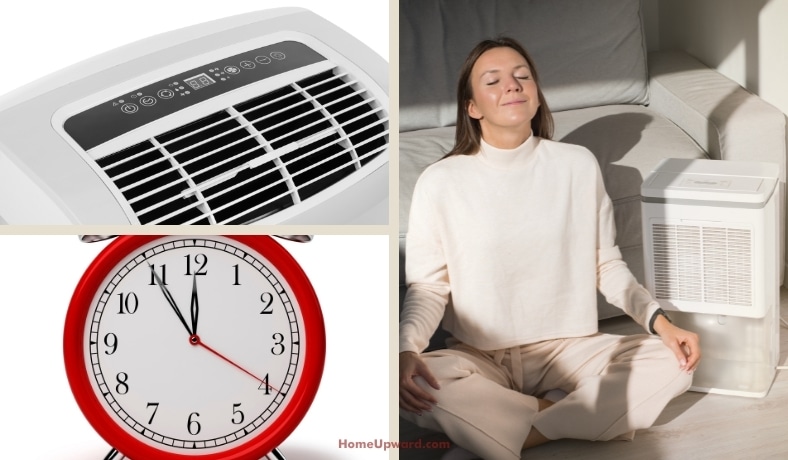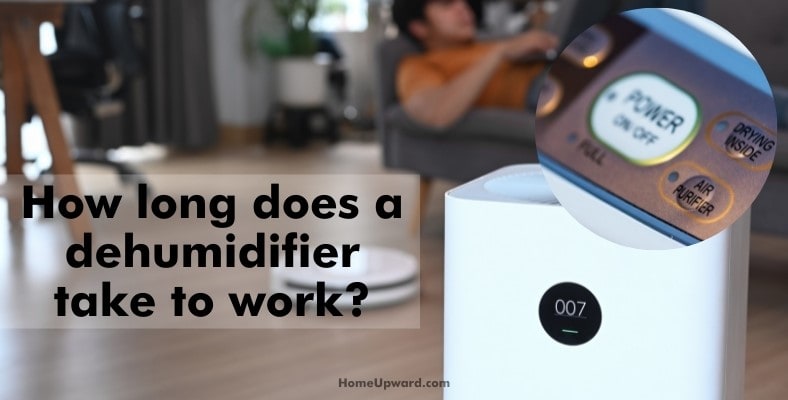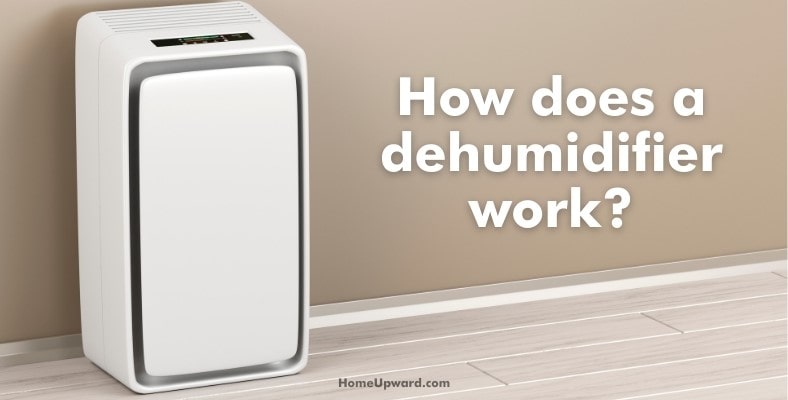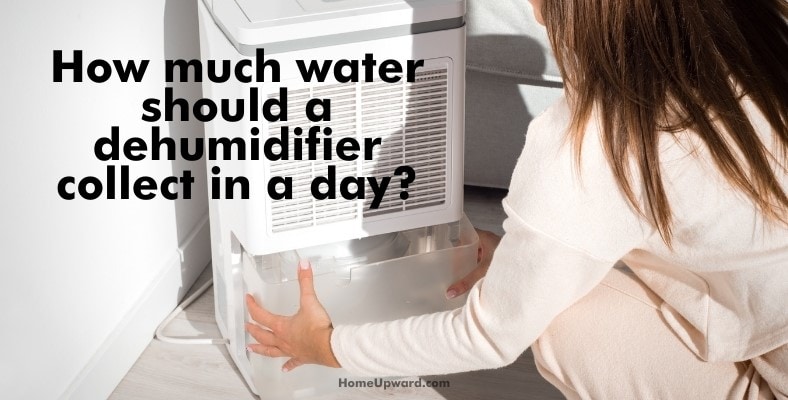Ever wondered how long does it take for a dehumidifier to work? And just exactly how do they work and what is there you should know?
Will it work immediately, or does it take time to see results? In this article you’ll find out this and much more, too. Some of it may even surprise you!
Contents
How Long Does a Dehumidifier Take to Work?
Generally speaking, it takes about 12 hours to reach a desirable humidity level the first time you run your unit. However, the amount of time needed depends on the indoor humidity level and temperature, the room size, and the dehumidifier’s type and capacity.
Once you install your dehumidifier, it may automatically begin extracting moisture from the air. Others take longer to calibrate and start working.
What Factors Affect the Dehumidifier’s Performance?
Higher humidity levels suggest that the dehumidifier will take longer to extract the water. Ideally, your home should lie between 30% and 60% humidity. For example, the unit would take longer to drop the house’s humidity levels if your home had a water leak. In that case, you would need to use it for nearly 48 hours to get back to healthy levels.
However, hotter air can energize water molecules and reduce the likelihood of condensation. On the other hand, colder air does not add thermal energy to the water molecules, so they have a greater chance of condensing. As a result, warmer air has more water molecules than colder air, and it takes longer to lower the humidity levels.
The two types of dehumidifiers are standalone and ducted, which work in a single room or the whole house. Standalone dehumidifiers are portable and designed for occasional use. Ducted ones work best for those who live in consistently humid environments and need frequent humidity control.
The capacity refers to how much humidity it can extract in one day. Residential dehumidifiers range from a 20- to 70-pint volume, meaning they can take 20 to 70 pints of water out of the air after running for 24 hours.
While it is unlikely that your house will ever reach these values (unless you live in a rainforest), higher capacity models reduce humidity levels faster. If you have a large room or high moisture levels, you may want a high-capacity unit to remove water quickly. Smaller models require you to empty the reservoir every few hours.
Where Does the Water Come From in a Dehumidifier?
A dehumidifier absorbs the humidity in the air and condenses it in its water reservoir. Some contaminants are extracted during condensation, making dehumidifier water distilled.
That does not mean you should drink dehumidifier water! Your reservoir harbors germs, and the water will still have some contaminants. You would need to purify it to remove the rest of the impurities.
How Does A Dehumidifier Work?
Dehumidifiers are devices that reduce the humidity in a room. They can eliminate dust mites, allergens, mold, and mildew by creating a dry environment. Dehumidifiers can also cool down your home, making them a summertime necessity in many areas.
Most dehumidifiers use refrigerant in sealed lines under pressure (pumped by a compressor very similar to an air conditioner) to continuously remove heat from the air as it passes through the unit. A fan moves air through the unit where it passes through cold coils (called a condenser) that condenses moisture in the air as liquid water droplets.
The liquid that’s collected builds up in large droplets that fall into a reservoir such as a tank, drip pan, or bucket to be emptied later once it’s full.
Other types of dehumidifiers like you’d use in damp or musty closets have a material that absorbs moisture in the air nearby. These types must be replaced once they’ve been used up. These types are often for light-duty use and use certain materials that can absorb and trap moisture.
Humidifier vs dehumidifier differences
Humidifiers do the opposite: they increase the moisture in a room by taking liquid water from their reservoirs and changing it into a mist or steam. The water dissipates throughout the room as it works, boosting the humidity level.
Typically, you’d use a humidifier when living in a dry environment, extract too much humidity with your dehumidifier, or fall ill. Often, you would find an evaporative, warm mist, or cool mist humidifier.
Wintertime, when the air is severely dry, is a great example of when you’d use a humidifier instead of a dehumidifier.
How Much Water Should a Dehumidifier Collect in a Day?
Your dehumidifier should collect the amount of water its capacity says it has. If you have a small model and high household humidity level, it may fill up after six or seven hours. When that happens, it’d be a good idea to empty it and start again to reduce the moisture further.
Purchasing a self-draining dehumidifier or one with a large tank will cut the number of times you empty the reservoir, letting you run it for more hours.
Ultimately, how much your dehumidifier collects depends on its capacity and a room’s humidity levels.
How Long Do I Keep My Dehumidifier on For?
The time you leave your dehumidifier running depends on the humidity of your space.
When you run your unit for the first time, you’ll be able to keep it active for around 12 hours to test its capabilities. If the air feels a bit dry after, you can shorten the length you leave it on for the next time you use it. Rooms that still feel damp may require you to run the dehumidifier for 24 hours.
Smaller rooms or those with lower moisture levels may only need to be run for a few hours a day. You can get away with a smaller capacity unit, and you may only have to run it for a little bit while you are home.
In a large or wet room, you can run it throughout the entire day. The dehumidifier will have plenty of time to adjust to its environment and extract moisture. You would need a high-capacity dehumidifier to complete this task or be willing to empty the reservoir every few hours.
If you cannot stay home all day and can only get a smaller unit, look for one with a self-draining or automatic shutoff feature. Self-draining models discharge the water to a specific drainage location, while automatic shutoff models turn off before the reservoir can overflow.
Keep in mind that dehumidifiers contribute to your energy cost. If you have relatively high bills already, try to turn the model on when you are home and leave it running until it feels livable again.
Also, you can purchase an energy-saving unit. Unfortunately, it is harder to find these in large sizes, so it may not work for your house.
Should a Dehumidifier Run All the Time?
The best times to run a dehumidifier are before 7:00 a.m. and after 11:00 p.m. on weekdays. The electricity industry considers these hours the peak load on the energy grid.
Try to run it between 11:00 p.m. to 7:00 a.m. on weekdays or at any time on weekends or holidays. These hours are off-peak because more businesses are closed. The lowest energy demand occurs at 5:00 a.m., making this an ideal time to test your dehumidifier.
During the summer, electricity consumption usually increases throughout the day with temperature, peaking between 5:00 p.m. and 6:00 p.m. Running the dehumidifier during the evening can reduce the strain on your house’s electricity use, but your home will have fewer water particles in the air.
Of course, you can run a dehumidifier all the time, but we do not recommend it. After all, that’s likely to drive up energy costs and even dry out your home too much. Only run it continuously if your house has experienced a flood, water leak, or you have an extraordinarily damp space. Otherwise, try to run it for smaller periods during off-peak hours.





